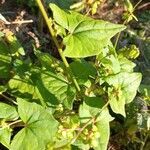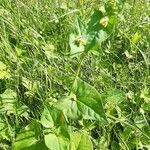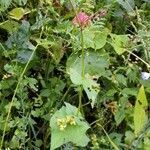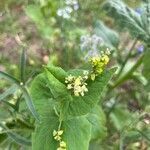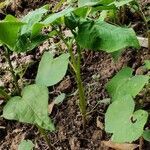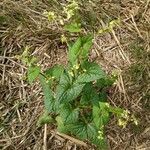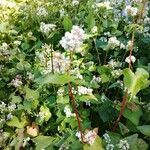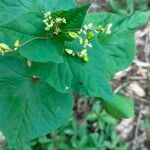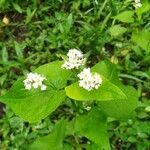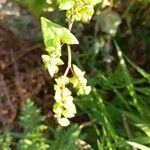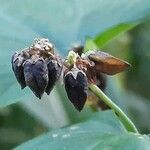Herbs annual. Stems erect, green, 30-70(-100) cm tall, branched, striate, papillate. Petioles ca. as long as blade; leaf blade broadly triangular, 2-7 × 2-8 cm, both surfaces papillate along veins, base cordate or truncate, margin entire, apex acute; ocrea brown, ca. 5 mm, membranous, oblique. Inflorescence terminal or axillary, racemose, several racemes together paniculate, lax; bracts ovate, 2-3 mm, apex acute, each 2-4-flowered. Pedicel 3-4 mm, articulate at middle. Perianth white or greenish; tepals elliptic, ca. 2 mm. Stamens included. Stigmas capitate. Achenes much exceeding persistent perianth, black-brown, narrowly ovoid, trigonous, 5-6 mm, surfaces grooved; angles rounded below middle, sharply acute above, sometimes sinuate-dentate along angles. Fl. May-Sep, fr. Jun-Oct. 2n = 16*.
An annual herb. It grows to 100 cm high. The upper leaves have long stalks. The leaves are 2.5-12 cm long by 2.5-11.5 cm wide. They are broadly triangular shape. The flowers are pink or white. The fruit is dry and with one seed. It is grooved. There are several named cultivated varieties.
Seldom escapes from cult. Its racemes are more scattered along the stem, and the achenes are smaller and dull, with irregularly protuberant angles.
